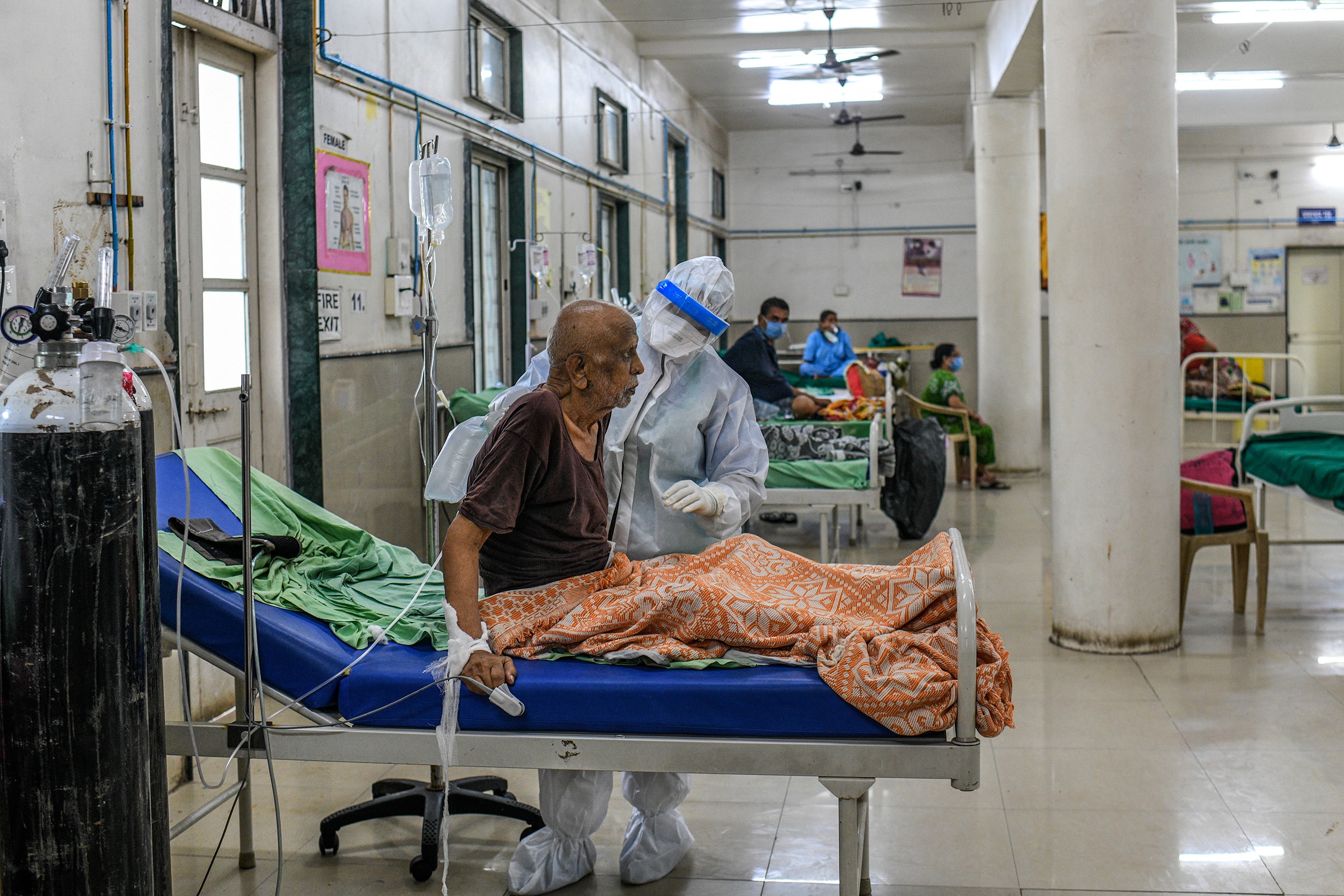Both white and black fungus infections are caused by fungi moulds called ‘mucormycetes’.
After four cases of white fungus were reported in Patna on Thursday, experts have said that the fungal infection could be more dangerous than the black fungus. Meanwhile, India has been witnessing a rise in the cases of mucormycosis, or what is commonly known as the black fungus, as the country battles the deadly second wave of COVID-19 pandemic.
The Union government had on Thursday urged states and Union Territories to make mucormycosis or black fungus a notifiable disease under the Epidemic Diseases Act, stating that the infection is leading to prolonged morbidity and mortality among COVID-19 patients. However, the reports of white fungus cases have also raised concerns as infection is found to be more deadly than the black fungus.
Head of Department of Microbiology Dr SN Singh said the newly detected fungal infections pose a risk to patients on oxygen support and is reported to cause skin damages. If detected late, the infection can lead to death, he warned. The doctor appealed to COVID-19 and recovering COVID-19 patients (who have tested negative) to take white fungus seriously.
Both white and black fungus infections are caused by fungi moulds called ‘mucormycetes’ which are present in the environment, according to a Times Of India report.
WHITE FUNGUS
According to experts, the white fungus infections are more dangerous than black fungus due to its acute affect on lungs and other body parts. White fungus becomes more lethal because of the way it spreads and causes great damage to the vital organs. It may impact brain, respiratory organs, digestive tract, kidneys, nailbed or even private parts.
BLACK FUNGUS
As cases of blacks fungus, mucormycosis, raise concerns across the country, AIIMS Director Randeep Guleria clarified that the fungal infection is not new, but the cases have increased with COVID-19. Guleria said the ‘misuse’ of steroids is one of the major causes behind black fungus cases.
“This disease (Mucormycosis) can affect the face, infecting nose, orbit of eye, or brain, which can cause even vision loss. It can also spread to the lung,” Guleria said, adding that people should follow protocols of infection control practices at hospitals. “It is been seen that secondary infections, fungal & bacterial, are causing more mortality,” Guleria added.
WHO IS MORE LIKELY TO BE AFFECTED BY WHITE FUNGUS?
According to a report by indianexpress.com, the white fungus is more likely to infect people with low immunity. It can also be caused if people come in contact with water or unsanitary environment containing the moulds. The disease isn’t contagious but a person is said to be vulnerable to the infection since these moulds can be easily inhaled by a patient. The fungus can further spread to vital organs and cause complications.
People with low immunity, commorbidities, diabetes, cancer or those using steroids regularly are at a higher risk of getting infected with the white fungus.
WHO IS MORE PRONE TO BLACK FUNGUS?
Diabetic patients, COVID patients and people who are on steroids are at a higher risk of contracting the black fungal infection.
Major risk factors for this disease include uncontrolled diabetes mellitus, immunosuppression by steroids, prolonged ICU stay, malignancy and voriconazole therapy, an ICMR-Health Ministry advisory stated.
SYMPTOMS AND TREATMENT OF WHITE FUNGUS
Patients of white fungus infection show symptoms similar to COVID-19. The four white fungus cases reported in Patna hospital showed COVID-related symptoms but did not test positive for COVID. In all the cases, the lungs of the patients were found infected. The symptoms can also be similar to black fungus.
As the white fungus affects lungs and chest, it may lead to cough, chest pain, breathlessness. The infection may have inflammatory symptoms and cause swelling, infections, persistent headaches and pains.
While the infection can be detected through X-rays and CT scans, the patients are given anti-fungal medication for its treatment. In the cases reported in Patna, the patients were given anti-fungal medicines and they recovered.
SYMPTOMS AND TREATMENT OF BLACK FUNGUS
The black fungus or mucormycosis is primarily affecting people recovering from COVID-19. The infection is causing blackening or discolouration over the nose, blurred or double vision, chest pain, breathing difficulties and coughing blood. Mucormycosis predominantly involves the synuses, the eye and at times it can go on to the brain and have nasal involvement. There have been some reports of pulmonary mucormycosis.
West Bengal health department has released an advisory titled ‘Mucormycosis – if uncared for – may turn fatal’, which mentions warning signs of the disease such as pain and redness around eyes or nose, fever, headache, coughing and shortness of breath along with vomiting blood and ‘altered mental status’ – general changes in brain function like confusion, amnesia, loss of alertness and
The advisory pointed out that nasal blockade or congestion, one-sided facial pain, numbness, blackish discolouration over bridge of nose or palate, toothache, loosening of teeth, blurred vision along with chest pain and worsening of respiratory symptoms are suspected signs of being infected by mucormycosis.
Anti-fungal drug Amphotericin-B is being used to treat the cases of black fungus.
NECESSARY PRECAUTIONS TO PREVENT BLACK FUNGUS:
According to the advisory issued by West Bengal health department, as people catch the infection by coming in contact with fungal spores in the environment, people have been cautioned against having exposure to decaying bread, fruits and vegetables, besides soil, compost and excreta. “Wear shoes, long trousers, long sleeve shirts and gloves while handling soil gardening. People must maintain personal hygiene and thorough scrubbing is recommended while bathing,” the advisory said.
The disease can develop after the fungus enters the skin through a cut, burn or other types of skin trauma. The advisory said that use of masks is necessary especially during visits to dusty construction sites. On the management of the disease, the health department has advised adherence to strict diabetes and diabetic ketoacidosis control as well as reduce steroids.
“Discontinue immunomodulating drugs and infuse normal saline before Amphotericin B (an anti-fungal medication) infusion. Patients should be monitored clinically and with radio imaging for response and to detect disease progression,” the advisory read. The blood-glucose level should be monitored post Covid-19 discharge as well as regular examinations to find any warning signs, it stated, besides mentioning judicious usage of steroid and antibiotics.





































